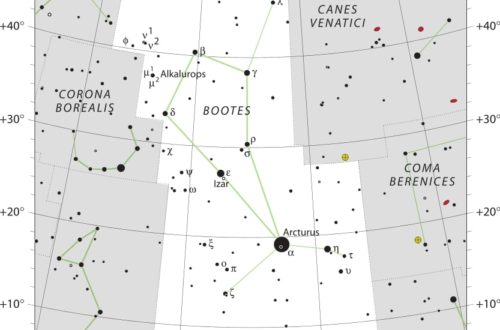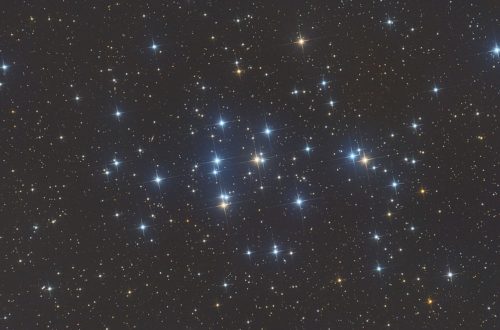Stargazing Calendar for May 2023

Looking for the May 2025 stargazing calendar?
Hello fellow stargazers! This month the big event will be a penumbral lunar eclipse, but there are also two meteor showers, two comets at perihelion, many conjunctions, and one near-Earth object making a close approach to Earth.
Would you like to be notified of stargazing events?
On May 5, we will be able to observe a penumbral lunar eclipse. Such an eclipse occurs when the Earth passes between the Sun and the Moon, causing the Moon to move through the Earth’s outer shadow (penumbra), resulting in a slight darkening of the Moon’s surface. Since the Moon only passes through the Earth’s outer, lighter shadow rather than its darker inner shadow (umbra), this type of eclipse is not as dramatic as a total lunar eclipse. Penumbral lunar eclipses are rather frequent and visible at any time from anywhere on the night side of the Earth. As you can see in the NASA chart below, this eclipse will be visible in nearly all parts of the world, except the Americas, so unfortunately I won’t be able to see this one. Hopefully you’re luckier than I am!
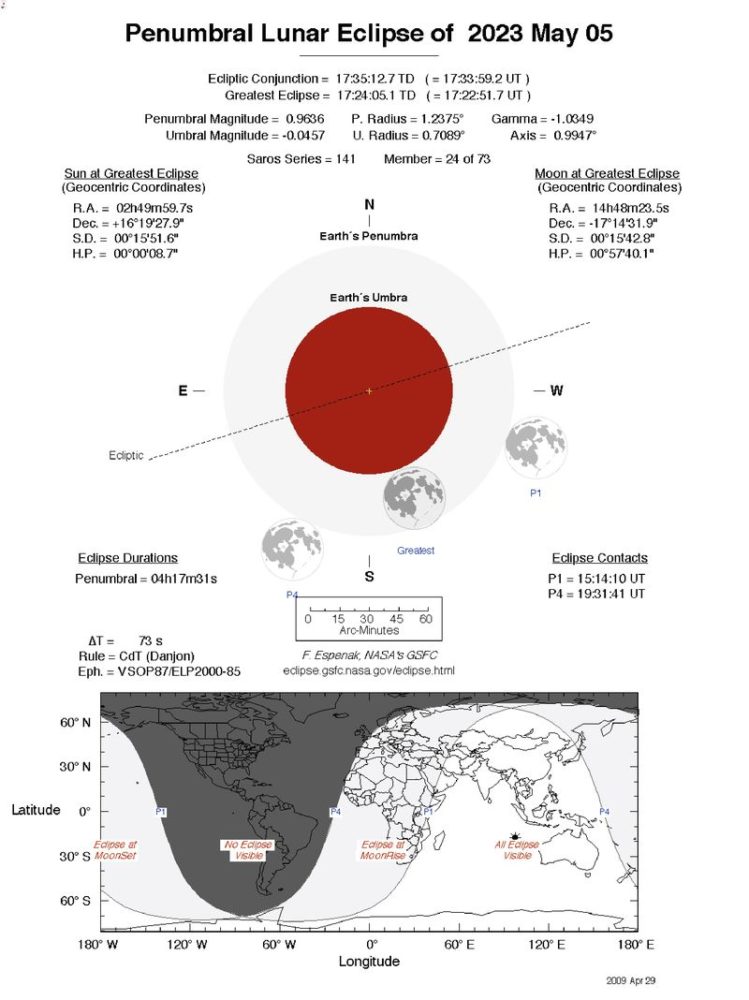
Then on May 6, the η-Aquariid meteor shower will peak with an average of 40 meteors per hour if conditions are ideal. Some meteors will also be visible between April 9 and May 28. They will appear to radiate from the constellation of Aquarius, more specifically the star Eta Aquarii. The Eta Aquariids will be the best meteor shower this month (yes there will also be another) so you shouldn’t miss it. What’s interesting is that this meteor shower originates from debris that separated from Halley’s comet centuries ago.

On May 8, the comet C/2020 V2 (ZTF) will reach perihelion. This means it will reach its closest point to the Sun at a distance of 2.23 AU. Unfortunately it will be difficult to observe on that day because it will be very close to the Sun, at a separation of only 9° from it. You could wait until it moves away from the Sun, but if you decide to try to observe the comet during the perihelion be careful to not point your binoculars or telescope directly at the Sun for the safety of your eyes. Look in the constellation of Aries.

Then on May 9, the η-Lyrid meteor shower will peak. This is a much smaller meteor shower with only an average of 3 meteors per hour during the peak with ideal conditions. Some meteors will also be visible from May 3 to May 14 and they will appear to radiate from the constellation of Lyra. The Eta Lyrids originate from debris left behind by the comet IRAS–Araki–Alcock.
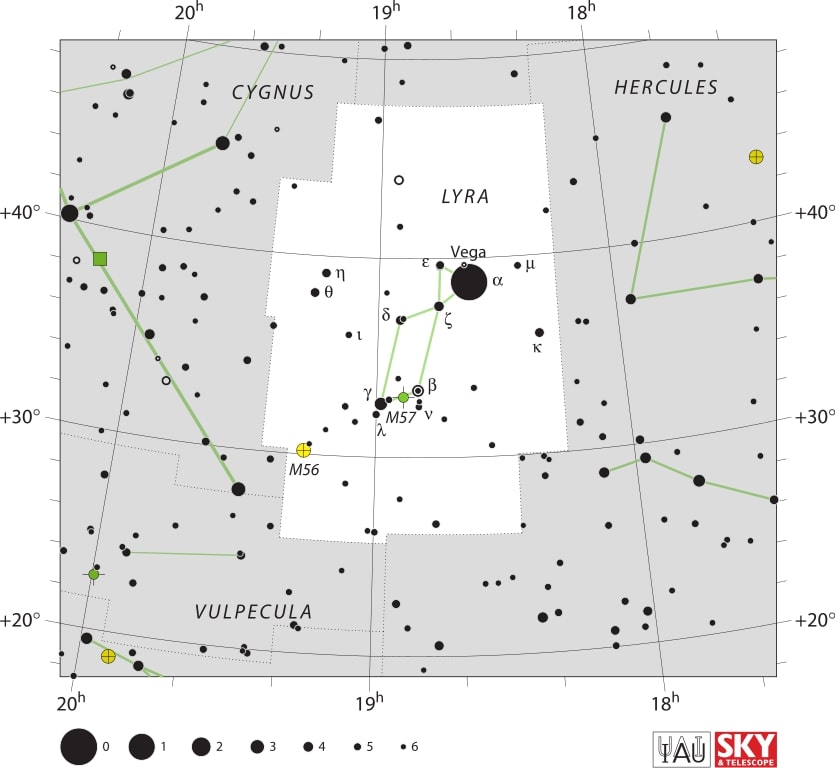
On the same night, the comet C/2020 K1 (PANSTARRS) will reach perihelion, meaning it will reach its closest point to the Sun at a distance of 3.07 AU. Look in the constellation of Pavo.
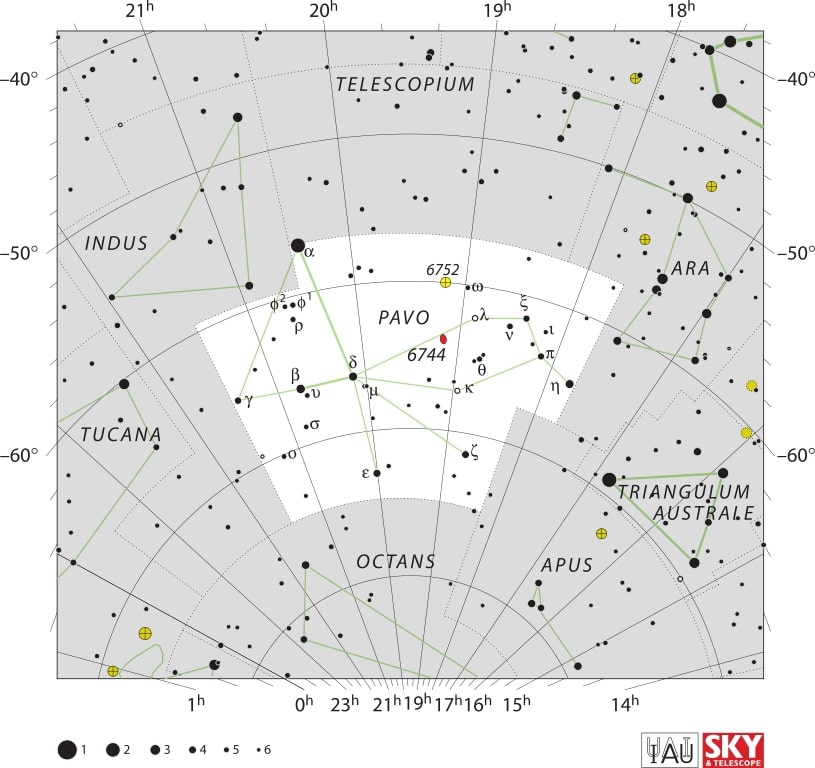
On May 13, there will be a conjunction of the Moon and Saturn. This means the two bodies will share the same right ascension, passing 3°17′ of each other. At nearly the same time, the two bodies will also make an appulse, meaning they’ll get closest to each other (no longer sharing the same right ascension) at 2°59′ of each other. Saturn will be at apparent magnitude 0.8, and the Moon at -11.7. They will both be located in the constellation of Aquarius.
The next night on May 14, there will be a conjunction of the Moon and Jupiter, the two bodies sharing the same right ascension at 47′ of each other. At nearly the same time, the two bodies will also make an appulse, meaning they’ll make a close approach at 43.1′ of each other. This will happen at the edge of two constellations, with the Moon being in Aries and Jupiter in Pisces. In some parts of the world, this will result in a lunar occultation of Jupiter, meaning the Moon will pass in front of Jupiter. This can be observed from most of North America, except for the West Coast. It will also be visible in Greenland, Iceland, Scotland, and Scandinavia.

On the same night, there will also be a conjunction of the Moon and Mercury. The two bodies will pass within 3°35′ of each other, both in the constellation of Aries. This second conjunction makes this event a bit more spectacular as you can observe three celestial bodies close to each other.
Later in the month on May 23, there will be a conjunction of the Moon and Venus. They will pass within 2°12′ of each other, both in the constellation of Gemini. At about the same time, the two bodies will also make an appulse (close approach) at 2°11′ of each other. The Moon will be at apparent magnitude -10.5; and Venus at -4.2.
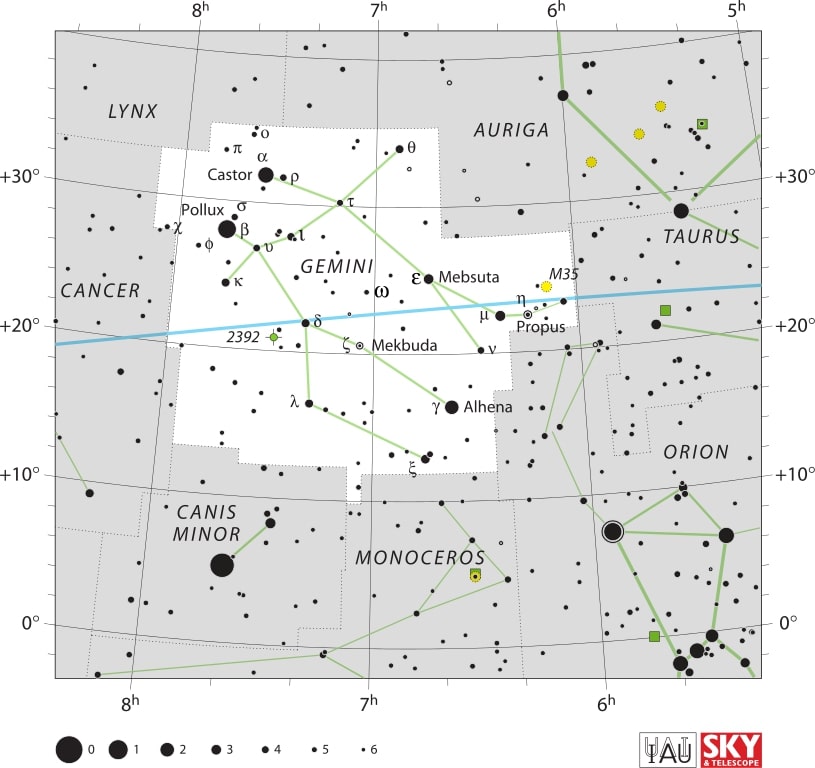
The next night on May 24, there will also be a conjunction of the Moon and Mars. They will pass within 3°45′ of each other, both in the constellation of Cancer. At around the same time they will also make an appulse at 3°39′ of each other. The Moon will be at apparent magnitude -11.0, and Mars at 1.5. Although Venus will no longer be as close to the Moon as on the previous night, it will still be nearby and so you can observe the three celestial bodies together.
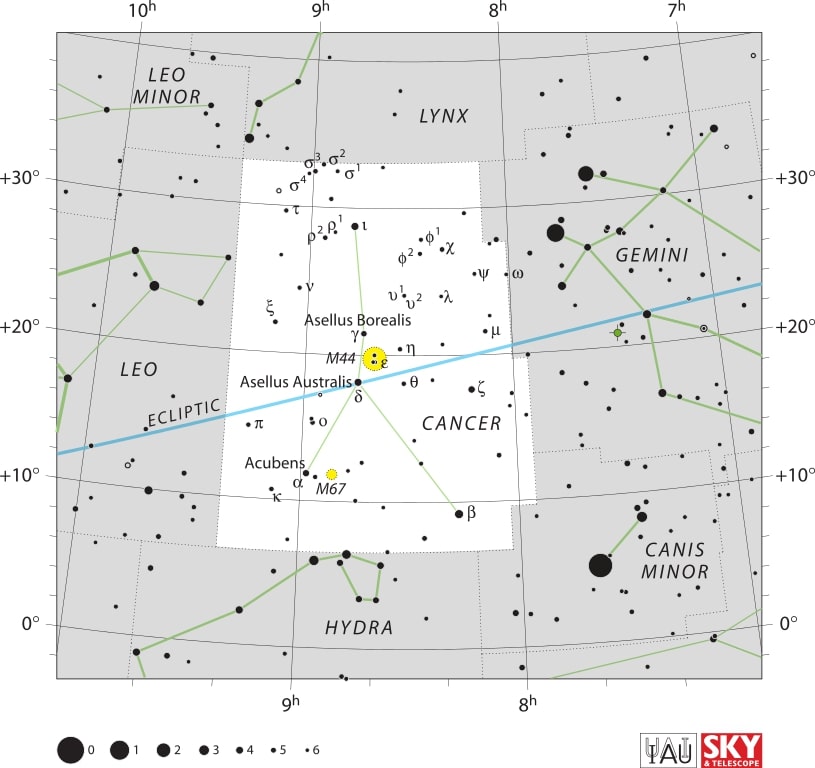
On May 29, Mercury will be at greatest western elongation. This means that the planet Mercury will reach its greatest separation from the Sun in the morning sky. This means the planet is easier to observe because there’s less interference from the Sun and it stays in the night sky longer. Look for Mercury in the constellation of Aries.
Finally on the last day of the month, on May 31, the near-Earth asteroid 2012 KP24 will make a close approach to Earth. It will pass between 0.19 and 24 lunar distances of the Earth, but it’s expected to be closer to 10 lunar distances. The asteroid has a diameter of 17 meters and is estimated to have an apparent magnitude of 21.6, so not very easy to spot. You’ll definitely need a powerful telescope. Most of these near-Earth objects are discovered only a few days before they make a close approach, or even after. That being said, it’s difficult to get any significant lead time on these, but whenever there is, I’ll be adding them to the calendar for you.
Moon phases
As you know, the Moon has a big impact on the visibility of celestial bodies in the night sky. So here are the Moon’s phases for this month:
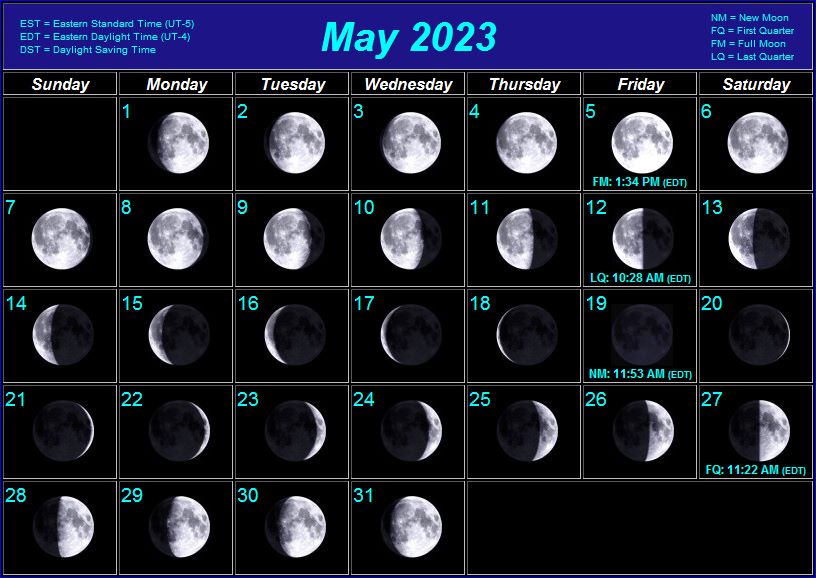
Positions of the planets this month
Mercury: The closest planet to the Sun can be seen at dawn and dusk travelling across the constellation of Aries. This planet, being the closest to the Sun, will appear to move quickly in the night sky and its position will change in the following weeks.
Venus: The sister planet can be seen near Mercury travelling across the constellation of Taurus then Gemini. Just like Mercury, Venus can only be seen at dawn and dusk.
Mars: The red planet can be seen in the constellation of Gemini.
Jupiter: The gas giant is visible in the constellation of Pisces. Jupiter can easily be spotted with the naked eye, even in highly illuminated cities.
Saturn: The ringed giant can be seen with the naked eye in the constellation of Aquarius.
Uranus: The gas giant can be seen in the constellation of Aries with the use of a telescope.
Neptune: The blue giant requires a telescope pointed in the constellation of Pisces in order to be seen.
Positions of dwarf planets and large asteroids this month
Ceres: The asteroid belt’s lone dwarf planet can be seen in the constellation of Coma Berenices with the help of a telescope.
Vesta: This large asteroid can be seen in the constellation of Cetus with a telescope.
Pallas: The asteroid can be observed with a telescope in the constellation of Canis Minoris.
Pluto: This distant dwarf planet can be found in the constellation of Capricornus with the help of a large telescope.
Major astronomical events next month
- June 6 – Asteroid 11 Parthenope at opposition.
- June 11 – Daytime Arietid meteor shower peak.
- June 13 – Close approach of Venus and M44.
- June 21 – June solstice.
- June 27 – June Bootid meteor shower peak.
Conclusion
And there you have it! Which of the astronomical events are you looking forward to the most? The penumbral lunar eclipse, the two meteor showers, the two comets at perihelion, the near-Earth object close approach, or the conjunctions? Let us know in the comments below.
Sources:
- Planetary ephemerides produced by NASA’s Jet Propulsion Laboratory (JPL)
- International Meteor Organization
See also:
- Previous month’s calendar: Stargazing Calendar for April 2023
- Next month’s calendar: Stargazing Calendar for June 2023
Would you like to receive similar articles by email?



